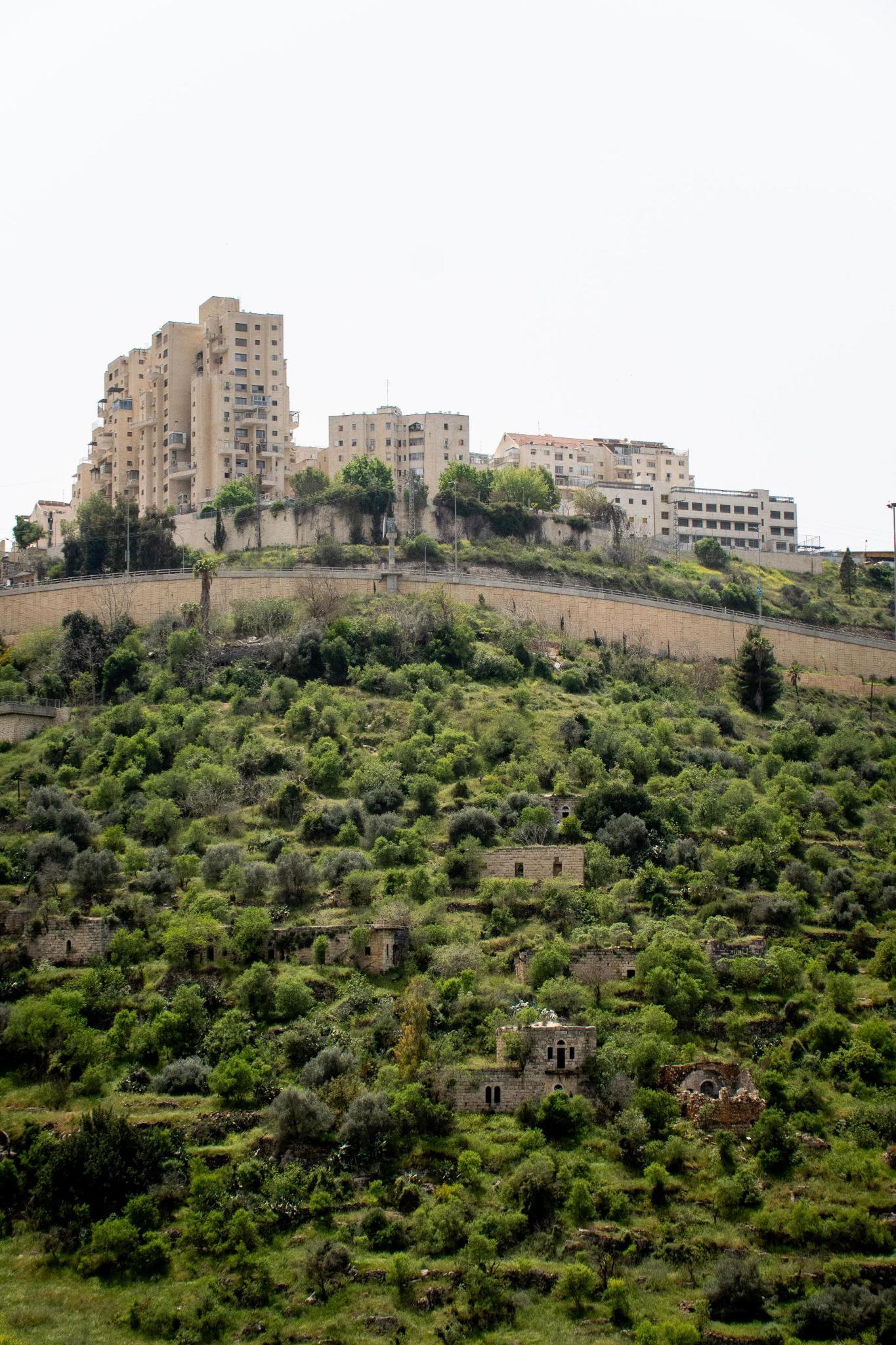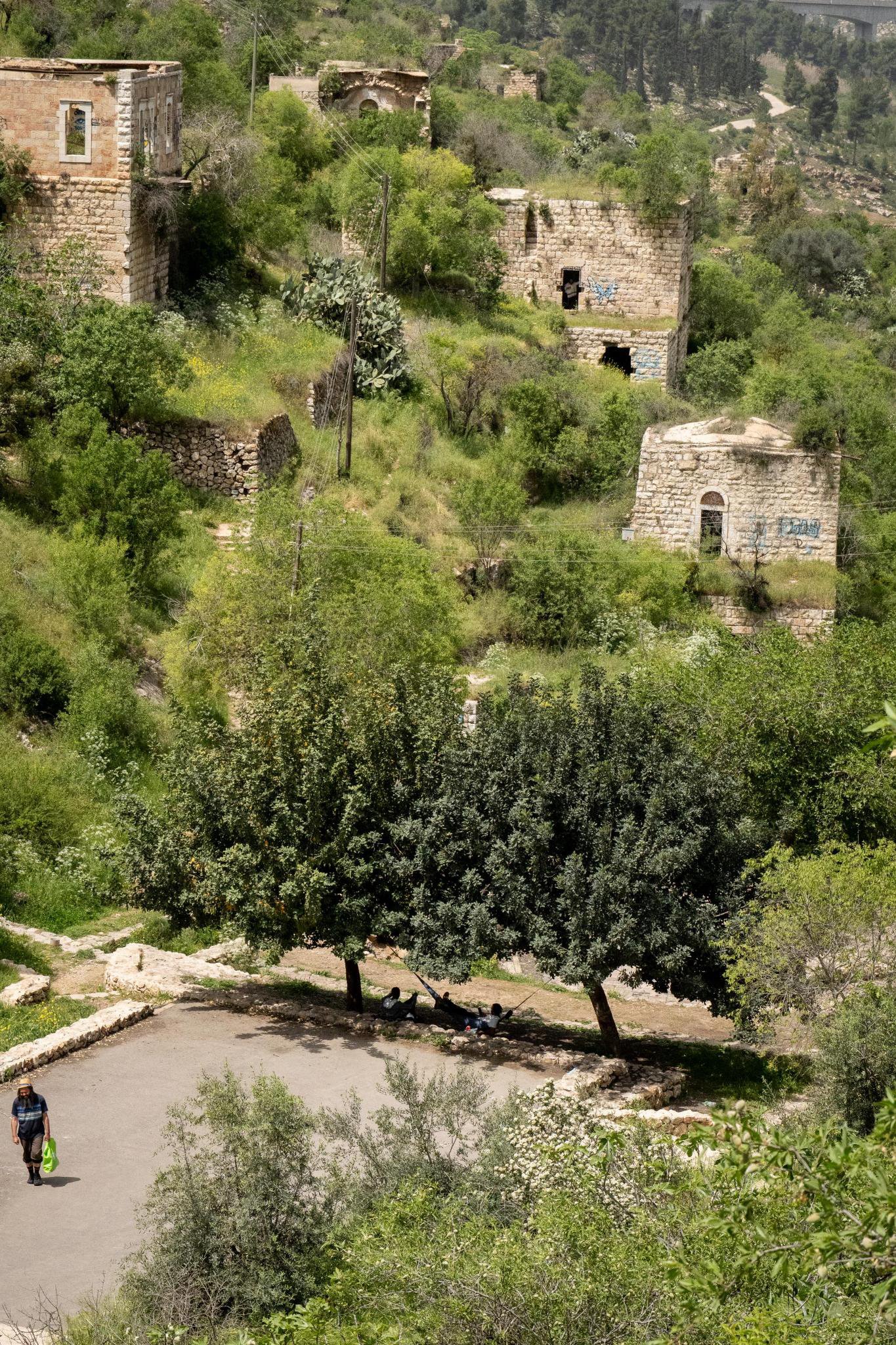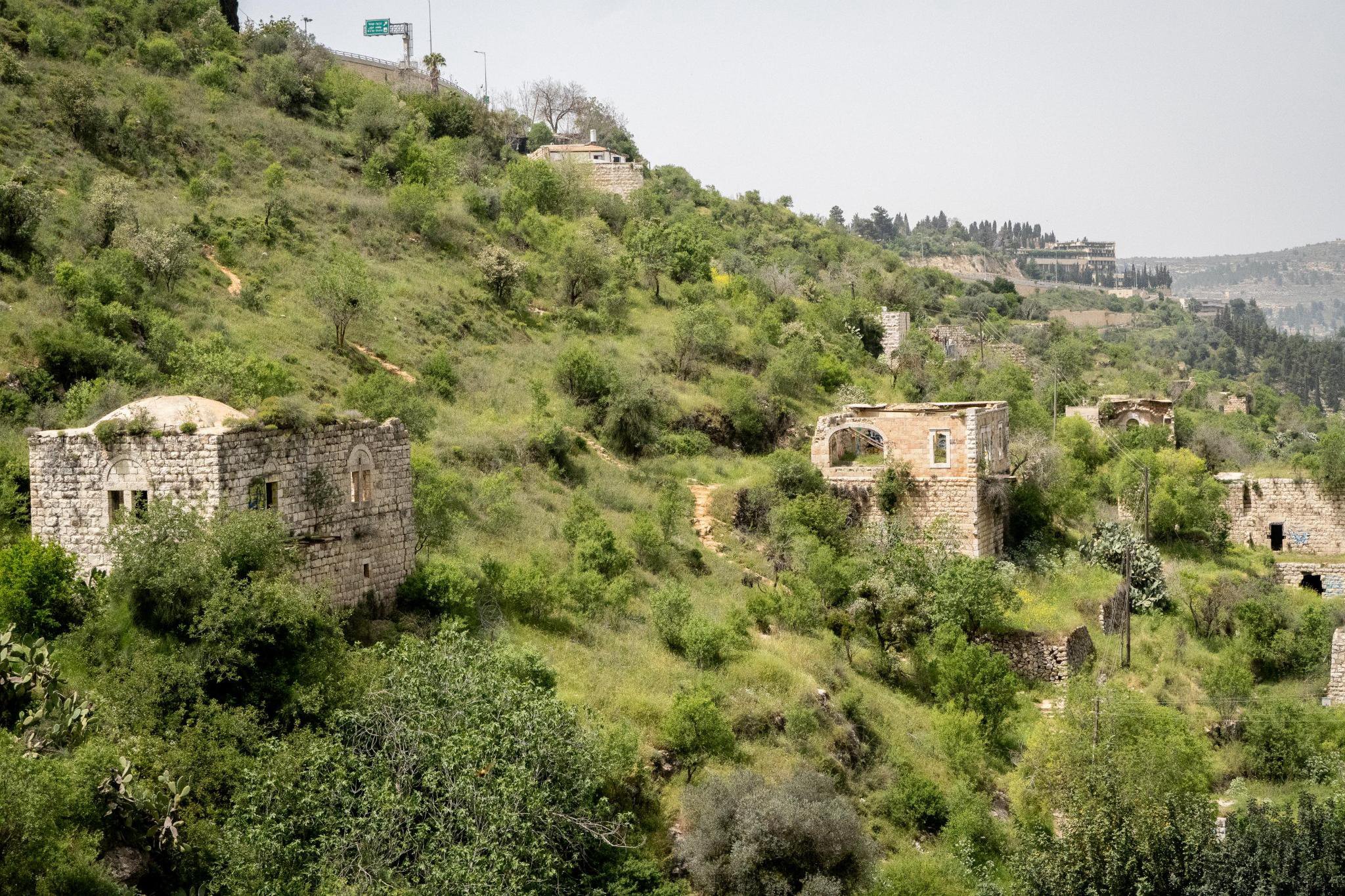Lifta and Yafa: Standing Through the Nakba
Written by Juliette
The fires that have been burning in Israel in the recent weeks shed light on the appropriation of Palestine and the changes made to its landscape by the occupation. Pine trees replaced olive trees, trying to make the land more “European”, while claiming its inhabitants are rooted in the Levant. This project to change the Palestinian land is one of the terrible consequences of the Nakba, and has been unfolding since the establishment of Israel.
During our two weeks trip throughout the West Bank, Jerusalem, and some territories within the Israeli borders, we got to grasp the significance of the 1948 Nakba and the impact it had not only on the people — displacing more than 700 000 Palestinians within the borders of Palestine or outside, with cities like Haifa, Bisan, and Yafa loosing 90% of their Arab population — but also on the land. Two places were particularly striking examples of the destruction that Palestine has been witnessing since 1947 (and even under the British Mandate), each in their own way.
On the northeast outskirts of Jerusalem, Lifta is one of the many scars inflicted by Israel on its “Promised Land”. We followed Zakaria Odeh, coordinator of the Civil Coalition for the Rights of Palestinians in Jerusalem, throughout the ruins of what used to be the 600 homes of 3000 Palestinians, recessed in a hill, in a breathtaking landscape, surrounded by trees, hills, natural pools…
View of Lifta, below the Israeli Separation Wall. © David.
Today, only 73 houses are visible, 17 of which are complete ruins. Lifta is unique in that it is the only depopulated Palestinian village that was neither completely destroyed nor built over by the coloniser population. Today, it is located in a natural reserve (as declared by the Israeli government in 2017) and stands as a reminder of what happened to more than 400 Palestinian villages during the 1948 Nakba, and until today threatens thousands of Palestinians who have received destroying orders from the Israeli Occupation Forces.
Remains of houses in Lifta. © Juliette
Remains of houses in Lifta. © Juliette
We slowly made our way down to the natural spring beneath the village, which has become a hiking destination for many Israelis, claiming this place as a spiritual retreat, bathing next to the ruins of Palestinian houses, surrounded by the memory of the people who once called this place home.
An Israeli coloniser leaving the water springs, Lifta. © David.
A few days later, we met with Umar al-Ghubari from the Israeli NGO Zochrot, founded in 2002 with the mission to educate Palestinians as well as Israelis to the ongoing Nakba, particularly to promote accountability among the Jewish people of Israel. Our steps took us to Yafa, to learn about yet another aspect of the nightmare that was, and is, the Nakba, and its consequences over the Palestinian landscape. Yafa is a surreal place. Israelis and tourists from all over the (Western) world, walk by the sea, unaware of (or unbothered by) the fact that below their feet and the seaside walk they enjoy are the ruins of the Palestinian houses destroyed in 1948, pushed on the beach and covered by cement.
Seaside walk, Charles Clores Park, Yafa. © David.
The anger one feels walking through this city is a hard-to-describe experience. The sadness and nostalgia coming out of Lifta give way to rage, seeing all those people happily enjoying a sunny day on the ruins of a once thriving Arab city. Umar walked us through the neighbourhood formerly known as al-Manshiyya[1], from which all is left today is the Hassan Beq mosque. The climax of this feeling was looking at Etzel House, the “Museum of Jaffa’s Liberators”. Etzel was a Jewish Zionist terrorist group active during the British Mandate, who helped expel thousands of Palestinians from their homes before the Nakba, and were only recognised as a terrorist organisation because they bombed the King David Hotel in Jerusalem in 1946, killing a number of British officials. The Etzel House still stands today and is visited by Israelis and tourists to commemorate the “Liberators of Yafa”.
Entrance of Etzel House, Yafa. © David.
Lifta and Yafa are both striking examples of what the Nakba has done to the Palestinian people, and to the land of Palestine. It has changed the landscape, tried to erase its history, and on this day, it is important to remember and commemorate the people who made the fabric of Palestinian culture, and to hold accountable those who have been consistently trying to destroy it. The myth of cohabitation between Israelis and Palestinians will only ever stay just that, a myth, unless the history of what happened from 1947 (and, one might argue, even decades before the Nakba), and is still going on today, is recognised and repaired.
View of Lifta. © David.
[1] Additional information about al-Manshiyya can be found in Zochrot’s booklet Remembering al-Manshiyya – Yafa (2010).








